By
Sabena Siddiqi
Operation Blue Star was a highly controversial military operation carried out by the Indian government to repress Sikh minorities in 1984. Injustices perpetrated by the Indian state on Sikhs after the partition of 1947, brought things to such a pass that Sikhs decided they wanted a separate Sikh country, Khalistan.
Punjab was one of the most prosperous provinces of India, verily the wheat-basket of India, yet the government refused to recognise Sikhs as a separate religious entity from Hindus, the intention being to wipe out the Sikh religion.
The Khalistan Movement started off in the 60s decade yet it gained momentum under the vibrant and charismatic leadership of Sant Jarnail Singh Bhindranwale, who had immense influence on Sikh youth. He refused to accept the controversial clause in the Indian constitution that classified Sikhs along with Hindus and not as a separate entity; Explanation II to Article 25 of the Constitution of India still classifies Sikhs as Hindus.
This was a planned constitutional assault on the independent status of Sikhism and Sikh identity by a so-called secular republic. It was Bhindranwale who first protested for the abolition of Article 25, but the Indian government did not want to solve the issue politically through negotiations.
In the buildup to the final clash, he was briefly arrested on false charges of killing political opponents. After this temperatures ran high and in 1982 he moved to the Golden Temple complex, and in 1984 moved to the Akal Takht.
Operation Blue Star was planned with the intention of eliminating Bhindranwale and his supporters, and to regain control over the Harmandir Sahib in Amritsar.
Bhindranwale’s reputation as a fierce emerging Sikh leader had suddenly peaked at home and abroad.
When a reporter asked him “Are you not afraid?”
He replied, “A lion is never afraid of the sheep.”
The reporter then said “But you are outnumbered by the thousands,” to which Bhindranwale replied,
“Sheep always outnumber the lions but one lion can easily take care of a thousand sheep.”
From 1977 until 1983, he led an agitation against fanatic Hindu organizations, this greatly perturbed the intrinsically Hindutva establishment.
Bhindranwale and his supporters had occupied the Akal Takht building in the Golden Temple in Amritsar, it is the repository for Sikhism’s Holy Book of scriptures and the headquarters of the religion. Bhindranwale became the only person to live in Akal Takht after the Sikh Guru Hargobind Singh Bhindranwale’s massive popularity and charisma made the Indian government feel threatened by him; he was believed to be formidable enough to fight for Khalistan.
Bhindranwale’s right hand man and adviser was Maj Gen Shabeg Singh, who had imparted guerrilla training to the Mukti Bahini in Bangladesh.
Bhindranwale was aware that this might be his last war, he knew the Indian Army would launch a brutal attack, yet he wanted to be a martyr.
His words were “I wish to say this with firm conviction that this time, when this place is attacked, it will provide its own example to the world and Khalistan will be created. Khalistan will certainly be created the day that they come in here and wish to engage in some improper activity.” – 27th May, 1983.
Meanwhile, Indian PM Indira Gandhi declared President’s rule in Punjab and deployed nearly seven divisions of Army, desperately trying to contain the situation and get Bhindrenwale and his disciples out of the Golden Temple.
Sikh leadership had called for non-payment of taxes from June 05 and the army feared that Bhindrawale might declare the establishment of Khalistan on that day.
The Indian Army prepared detailed plans for military operations whilst the government pressed for negotiations, ruling out any possibility of an attack on the Golden Temple.
The Indian Army’s first priority was to kill Bhindranwale’s tactical adviser Major-Gen Shabeg Singh, the operation led by Major-General Brar, who hoped to frighten Bhindranwale into surrendering.
The towers of the Golden Temple were blasted off with artillery fire, many people living in the vicinity losing their lives.
After this the commando operation was planned, Ajit Kumar Doval, the present Indian NSA, playing a major role in Operation Bluestar. He was in the Golden Temple weeks before in disguise, and had insidiously gained access to the Sikh defense strategy and plans, their intel, reinforcements available to them and other valuable information.
When the final assault came, Doval shared information with security forces to carry out search-and-flush operations.
The commandos suffered casualties as they entered the main gateway of the Temple, so Major-General Brar requested tanks be brought into the Golden Temple, as many as 13 used to blow up the Akal Takht, the highest seat of Sikh authority then taken by the Indian army.
Bhindrenwale announced “Those who want to be martyrs come with me” and he stood outside in front of Akal Takht where he fell to a barrage of bullets along with 40 to 50 of his followers.
The army assault took place on the night of 5th-6th June 1984, on the 7th June the dead body of Sant Jarnail Singh Bhindranwale was located in the basement of the Akal Takht.
Here are narratives of two survivors of the Golden Temple massacre, as related on Panthic.org:
Devinder Singh Duggal was in charge of the Sikh Reference Library located inside the Golden Temple complex, he is also an acknowledged authority on Sikh history.
His house was next to the Sikh library and he was present there between May 28 and June 6, 1984.
He said he is “an eye-witness to some of the atrociities committed by the Army during its attack on the Golden Temple.”
He said, “On 2nd June a team of five reporters including Mark Tully of the BBC came there (Golden Temple) and were told the truth. They were taken around the Golden Temple and shown 34 big wounds caused by the bullets on all sides of the Harmandir Sahib, some of them as big as almost 3? in diameter.”
Duggal recollects the happenings on June 4:
“At about 4 a.m. in the early hours of the morning of June 4, the regular Army attack on the temple started with a 25-pounder which fell in the ramparts of the Deori to the left of Akal Takht Sahib with such a thunder that for a few moments I thought that the whole complex had collapsed. I along with my wife were then sitting in the verandah of my house adjacent to the Sikh Reference Library. Recovering from the initial shock, we moved into the room and took shelter in one of its corners. Therafter, every second the ferocity of firing increased and it continued unabated till the evening of the 6th June.
As we were on the first floor, and our quarter was open on all sides, our position was very vulnerable. The bullets hit our quarters on all sides and some of them pierced through the doors and landed inside the room. To add to our miseries the power and water supplies had been cut. Through a slit in the shutter of a window we saw a large number of dead bodies in the Parikrama of the Golden Temple. They included women and children. We could not leave our room. Coming out in the open would have exposed us to sure death.”
According to Duggal, “the helicopter hovered above and continued to fire from above. Some of these helicopters also guided the firing squads of the Army by making circles of light around the targets. Immediately after these circles, the cannon bell would land on the target causing havoc. We saw a large number of boys blown to pieces.”
In Duggal’s words, “The night between the 5th and 6th was terrible. The tanks and armoured carriers had entered the Golden Temple Complex. The firing was such, that its ferocity cannot be described. In the early hours of June 6th, we learnt that the holy Akal Takht had been completely demolished in the firing.
As devoted Sikhs, we were extremely shocked. Tears flowed through the eyes of everybody there.
All through the night we heard the heart rending cries of the dying persons.”
“On 14th June 1984 I was arrested by the Army and taken inside the Golden Temple, where I was shocked to see that the Sikh Reference Library had been burnt. The entire Golden Temple Complex presented a very, very painful look. It bore at least 3 lakhs of bullet marks. The Akal Takht was in shambles. Guru Nanak Nivas, Teja Singh Samundri Hall, Guru Ram Das Serai and the langar buildings had been burnt. When I left the Complex on 6th all those buildings were in good shape in spite of the Army Attack, Taken to the Library’s ruins, I was asked by the Army Col. to take charge of the Library. I asked him as to were is the Library. He said that I had no option but to sign a typed receipt to the effect that I have taken over the charge of the Library. I refused to oblige him saying that I would not tell such a big lie.”
Baldev Kaur came to the Golden Temple on June 2, 1984 for the Gurupurab with her husband Puran Singh who is now in jail. She said:
“Very early on June 4, while it was dark, there was cannon fire from outside the Golden Temple without any warning. Shots were fired from all sides.”
“The firing that took place from inside the Golden Temple was negligible. On June 1, there was absolutely no firing from inside. Wheras on June 4, the ratio was something like this – if a thousand rounds were being fired by the Army from outside, then about one or one and a half rounds were fired in reply by the armed militants from inside the Temple complex.”
Dozens of bodies of Sikh men with their hands tied up behind them in execution style were found in several rooms, a journalist later claimed that he saw a whole truck filled with bodies of women and children, thousands of pilgrims died who were there for an important Sikh festival, the anniversary of the death of their fifth guru, Arjan Dev Ji.
Thousands of pilgrims and hundreds of Akali workers had been allowed to collect inside the Temple complex, with deliberate planning and design to carry out ethnic cleansing.
Seven divisions of the army were already deployed in Punjab, the media not allowed to cover the incident and there was a curfew. Journalists were loaded on to military buses and left outside the Punjab border.
The Indian PM Indira Gandhi was assassinated in the aftermath of this military operation, she was shot dead by two Sikh bodyguards on October 31, 1984.
There were numerous instances of mutiny by Sikh soldiers and officers in the Indian army as well.
Anti-Sikh riots started on 1 November 1984, which resulted in 30,000 Sikh casualties at the hands of furious mobs that attacked Sikh neighbourhoods, brutally killing any Sikh men or women they could find.
Delhi police did not try to put an end to the massacre, it is said that Congress party officials provided voter lists and ration lists to the mobs, these enabling them to find Sikh homes and businesses.
To make matters worse, the Indian army simultaneously attacked 40 other historical Gurdwaras all over Punjab, riots against Sikhs followed in Delhi, Kanpur, and other cities all over India in which thousands of Sikhs were murdered in broad daylight.
Indian govt records keep count that 3000 Sikhs were killed but the reality was that it looked more like ethnic cleansing. Thirty thousand were killed throughout India in the immediate aftermath and over 200,000 were displaced, people mostly burnt alive. 2.5 lakh Sikh youth have been killed since 1984, many tortured and persecuted.
It is apparent that Operation Bluestar was pre-planned by Prime Minister Indira Gandhi long before it occurred, army units having practised on a model of the Golden Temple complex months before the attack.
The political motive of the assault was to ensure votes from the Hindu majority by “disciplining” the tiny Sikh minority.
The Khalistan movement was a popular yet non-violent protest against the political blunders committed by Indira Gandhi, that could have been contained by engaging in negotiations.
The media was controlled by the government, fake narrative and evidence propagated some time before the attack to generate anti-Sikh sentiment, many Hindus celebrating as the army attacked the Golden Temple.
After the attack, many false claims were made and a methodical character assassination of Bhindranwale and his supporters was carried out by the controlled media.
Operation Black Thunder is the name of two operations that took place a few years later to flush out remaining Sikh activists from the Golden Temple.
The first Operation Black Thunder took place on April 30, 1986 while the second Operation Black Thunder began on May 9, 1988.
The repression of Sikhs has been a continuing and ongoing process in India, genocide not happening once, but a number of times, the community having systematically been crushed for decades to render it voiceless.
Operation Bluestar still rankles the Sikh community at home and abroad, Mandeep Singh Sandhu, 34, from Birmingham, and Dilbag Singh, 36, from London, were just kids when Operation Blue Star took place.
Dilbag Singh’s father and brother were missing since the 1984 genocide, they were present in the Golden Temple complex at the time of the Indian army’s attack.
Singh Sandhu and Dilbag Singh came to know that Lt General Brar, who planned and led Operation Bluestar, would be in London with his wife Meena, two reconnaissance missions were carried out to check out their movements, Harjit Kaur, 38, of Hayes, West London, followed the couple into a casino, a restaurant and onto a bus.
Later Lt.General Brar was attacked by four Sikhs, his throat was slit and he barely escaped alive, and this was in 2013, many years after Operation Bluestar.
For most Sikhs the war is not over until they take their revenge and create Khalistan, they are working towards making Referendum 2020 a success.
Sikhs want to exercise their right of self- determination and the right to govern their homeland as a sovereign nation under the Charter of the UN and Article 1 of International Covenant on Social and Political Rights.
I discussed Operation Bluestar with renowned Sikh human rights activist, Tajinder Kaur, who is based in Canada.
Luckily her immediate or even extended family was not affected by the operation, her parents had migrated from Punjab somewhere in the early 60s, and she related that the Sikh genocide was carried out in June 1984 and November 1984.
She believes that 2020 will definitely be the decisive year for Sikhs, the rest is in the hands of God. She has a lot of hope in the success of the referendum.
Today the fight for Khalistan continues, some rebels went under ground, some got killed while many were jailed. Some had to leave India and some still continue to fight for freedom whilst living in India, which carries tremendous risks.
Bhindranwale lives in the hearts of Sikhs even today, they derive courage and strength from his teachings.
“For the Sikh faith I am ready to sacrifice everything I have, for the safeguard and protection of the Sikh religion we must all be united, I can die but I cannot see the desecration of my religion.”
Sant Jarnail Singh Khalsa Bhindranwale

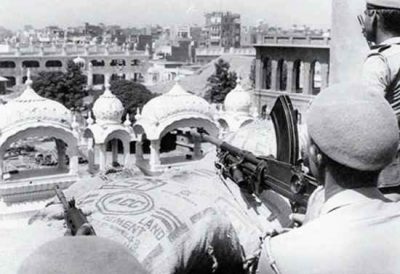
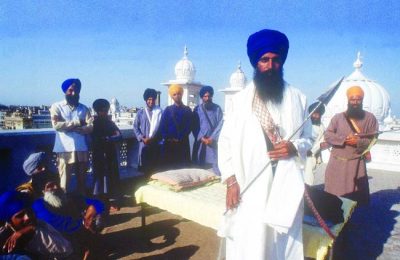
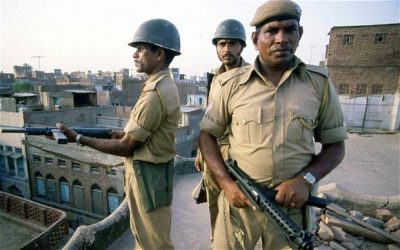
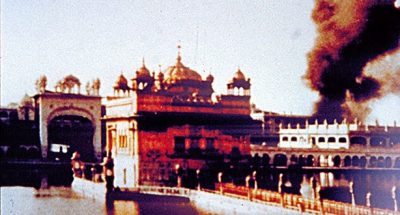
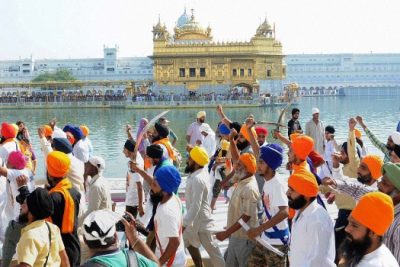
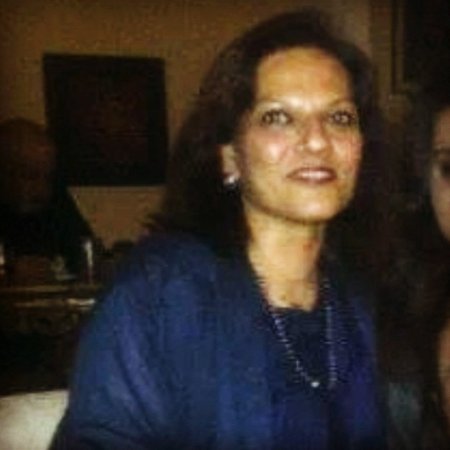
What is the present conditions of sikhs in pakistan past is past we cannot bring the lost ones and we should not repeat it further until it hurts regional these type of article should not be published which hurts humanity i personally think the value of life and visit the family who has faced challenges losing someone in there family on either side
Hell with doval and he'll wd india
Im proud of major general brar and present nsa ajit doval for their bold movement
What the writer failed to mention was the reign of terror unleashed by Bhindrawala. Rampant killings of non sikhs and oppressive taliban like diktats.As a resident of Punjab, I am old enough to remember all this and more. My uncle waz then a DIG in BSF and posted at Golden Temple. Sabena certainly should varify her facts before writing and I expect Tuck Magazine to not publish Anti INDIA propeganda without first looking into the facts.
Very interesting article. Thank you for this contribution.